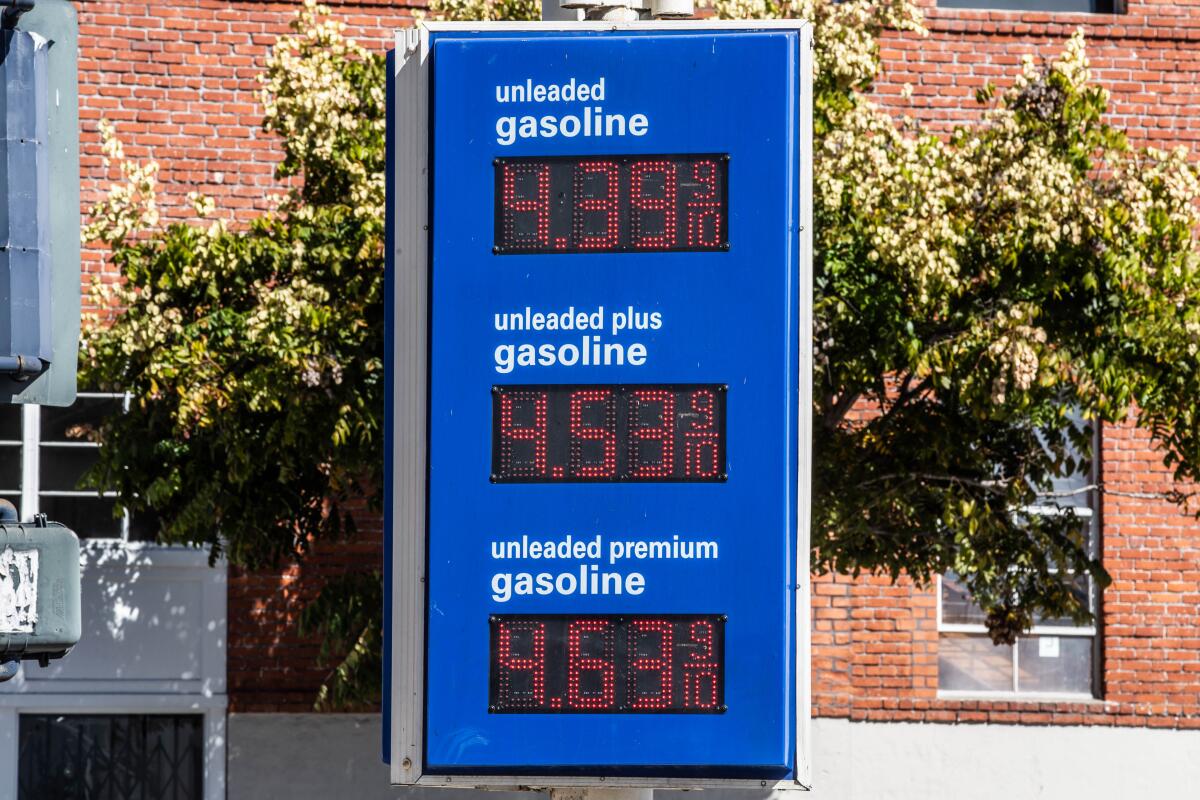Gas prices are rising again — and there’s no sign of letting up this summer

After a brief dip, gasoline prices in the U.S. are on the rise again.
The U.S. average price for a gallon of gasoline rose 2 ½ cents from last week to $3.09 per gallon Monday, according to the travel and fuel price tracking app GasBuddy.
The national average is now almost 5 cents higher than a month ago and 92 cents higher than at this time last year.
GasBuddy petroleum analyst Patrick De Haan says Americans should expect to pay even more at the pump heading into the Fourth of July, a popular road trip holiday weekend.
Ring provided at least 100 LAPD officers with free devices or discounts and encouraged them to endorse and recommend its doorbell and security cameras to police and members of the public.
With the U.S. economy rapidly recovering from the 15-month-long COVID-19 pandemic, demand for fuel is rising and pushing prices to levels not seen since 2014. And hurricane season always carries the prospect of higher prices if a storm affects oil drilling and refining on the Gulf Coast.
“Motorists should prepare to dig deeper for the second half of the summer, unfortunately,” De Haan said.
This month, the Energy Information Administration predicted gasoline would average $2.92 a gallon for the April-September summer driving season, up from $2.07 a gallon for the same period last year. For the full year, the EIA estimates regular gasoline will average $2.77 a gallon and U.S. households will spend $570 more on fuel than they did last year.
For consumers, higher gasoline prices are one element of an inflationary mix they’ve encountered as the economy recovers from the pandemic. Rising prices for commodities and materials have also boosted prices for such items as lumber, diapers as well as meat and poultry.
The Federal Reserve is expecting many of these increases to be temporary. In an appearance before a House subcommittee last week, Fed Chair Jerome H. Powell cited “the pass-through of past increases in oil prices to consumer energy prices” as one factor behind the increase in inflation.
While prices for some commodities have reversed direction recently, oil has held its gains for the most part. On Monday, West Texas Intermediate crude fell $1.14 to $72.91 per barrel, but the price is still up 50% on the year.
The most common gas price motorists in the U.S. were likely to see was $2.89 per gallon, the same as last week, GasBuddy said.
States closest to the large Gulf Coast refinery hub had the lowest average prices per gallon, led by Mississippi at $2.71 and Louisiana at $2.72. The states with the highest prices per gallon were California at $4.27 and Hawaii at $3.96.
More to Read
Inside the business of entertainment
The Wide Shot brings you news, analysis and insights on everything from streaming wars to production — and what it all means for the future.
You may occasionally receive promotional content from the Los Angeles Times.










